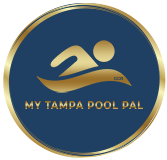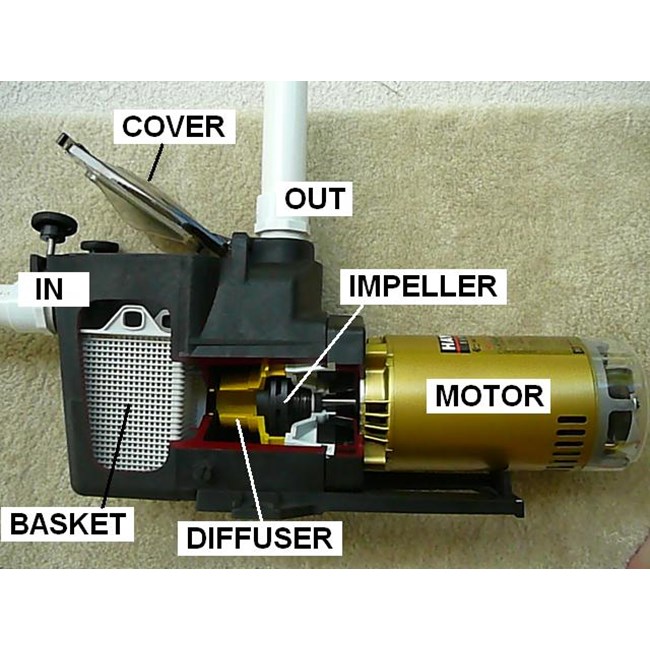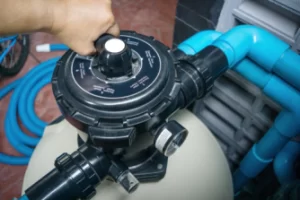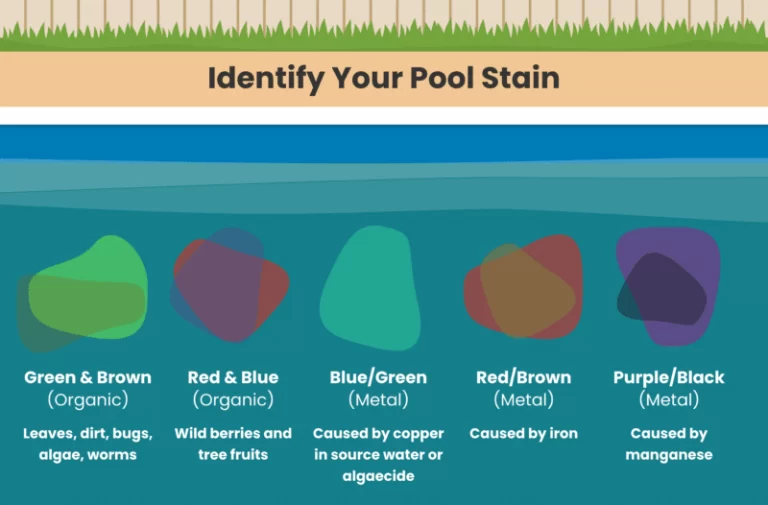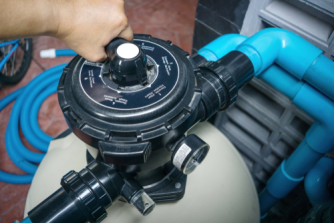Introduction to Pool Pump Maintenance: Why It Matters
Hey there, Tampa homeowners! Are you ready to become a pool pump pro? Let’s talk about why pool pump maintenance is a big deal. Picture this: a hot Florida day, you’re ready to jump into your sparkling pool, but uh-oh, the water’s looking a bit murky. The culprit? Often, it’s a neglected pool pump.
Think of your pool pump as the heart of your swimming pool. It circulates water, keeping it clean and clear. Neglecting it is like ignoring the heart of your pool’s health. Regular maintenance ensures your pump runs efficiently, saving you from costly repairs and ensuring your pool is always ready for a dip.
In this guide, we’ll walk you through the essentials of pool pump care. Whether you’re a DIY enthusiast or prefer to leave it to the pros, understanding the basics can help you keep your pool in tip-top shape. Let’s get started!
Understanding Your Pool Pump: The Heart of Pool Care
Alright, let’s get to know your pool pump a little better. It’s not just any piece of equipment; it’s the workhorse that keeps your pool inviting and swim-ready. The pump consists of three main parts: the motor, the impeller, and the basket. Together, they work to circulate water, filter out debris, and keep your pool’s chemicals mixed.
Knowing the basics of how your pool pump works can save you a lot of headaches. Regular check-ups can prevent common issues like clogging, overheating, or wear and tear. Plus, a well-maintained pump means more efficient energy use – and who doesn’t love saving on those energy bills?
In the sunny Tampa Bay Area, where pools are almost a year-round delight, understanding your pool pump becomes even more crucial. So, let’s ensure your pool stays a paradise with a pump that’s in perfect shape!
Monthly Inspection: Keeping an Eye on Pump Performance
Mark your calendars, folks! A monthly inspection of your pool pump is key to preventing larger issues down the line. Here’s what you should be looking for:
- Check for Leaks: A small drip can lead to big problems. Keep an eye out for any water leakage around the pump.
- Listen to the Motor: It should hum smoothly. Any grinding or screeching sounds? That’s a red flag.
- Inspect the Pump Basket: Make sure it’s not cracked or damaged and is clearing out debris effectively.
- Look at the Pressure Gauge: High pressure might indicate a clogged filter, whereas low pressure could point to a leak or blockage.
Regular inspections might sound like a bit of a chore, but they’re essential for keeping your pool pump running smoothly. Plus, catching issues early can save you a trip from your friendly neighborhood pool technician – though we’re always happy to help at My Tampa Pool Pal!
Cleaning the Pump Basket: A Step-by-Step Guide
Alright, Tampa pool owners, roll up those sleeves – it’s time to get hands-on with your pool pump basket. Regular cleaning is a must, and here’s how you do it in easy steps:
- Turn Off the Pump: Safety first! Always switch off the pump before you start any maintenance work.
- Relieve the Pressure: Use the relief valve to lower the pressure in the pump system.
- Remove the Pump Lid: Be careful here, as the lid can be tight and sometimes tricky to open.
- Take Out the Basket: Gently lift out the basket. Don’t force it, as it might be full of debris.
- Clean the Basket: Empty it and give it a good rinse. A hose works wonders for removing all the gunk.
- Check for Damage: Look for cracks or breaks in the basket. If it’s damaged, it’s time for a replacement.
- Put It All Back Together: Once the basket is clean and intact, place it back and secure the lid.
Voila! You’ve just ensured your pool pump can breathe easy and do its job effectively. Remember, a clean basket not only helps the pump run smoothly but also extends its life. So, give your pool pump basket some TLC, and your pool will thank you with crystal-clear water!
Checking and Maintaining Pump Seals for Longevity
Now, let’s talk about a crucial but often overlooked part of pool pump maintenance: the pump seals. These little guys are vital for preventing water leaks and protecting the motor. Here’s how to keep them in shipshape:
- Regular Checks: Inspect the seals every few months for signs of wear and tear. Look for cracks, brittleness, or any leakage.
- Lubrication: Occasionally, seals may need lubrication. Use a silicone-based lubricant (never petroleum-based) to keep them supple.
- Clean Environment: Keep the area around the pump clean. Debris and dirt can damage the seals over time.
- Replacement: If a seal is damaged, it’s better to replace it sooner rather than later. A faulty seal can lead to bigger, more expensive problems.
Remember, the health of your pump seals directly impacts the efficiency and lifespan of your pool pump. A little attention goes a long way in avoiding water leakage and motor damage. Keep those seals healthy, and your pool pump will keep chugging along, no sweat!
The Importance of Proper Priming: Tips and Tricks
Priming your pool pump is like warming up before a workout – it’s essential! Priming ensures that water flows through the pump and the entire system, preventing dry running that can damage the pump. Here’s how to prime your pool pump like a pro:
- Fill the Pump Basket: Before starting the pump, fill the pump basket with water. This helps create a suction to pull water into the system.
- Secure the Lid: Make sure the lid is tight and sealed. Any air leaks can hinder the priming process.
- Open the Relief Valve: This allows air to escape as water starts to flow.
- Start the Pump: Turn on your pump. You should see water flowing through the pump’s clear lid.
- Check for Steady Flow: Once you have a steady flow of water and no air bubbles, close the relief valve.
Remember, if your pump doesn’t prime within a few minutes, turn it off to avoid overheating. Check for any clogs or leaks and try again. Proper priming is key to efficient pool pump operation, ensuring that all that lovely, clean water gets circulated just right.
Motor Maintenance: Ensuring Efficient Operation
The motor is the powerhouse of your pool pump, and taking good care of it is crucial for efficient, uninterrupted pool enjoyment. Here are some tips to keep your motor running smoothly:
- Keep It Cool: Ensure the motor is not covered or crowded with plants or debris. Good air circulation helps prevent overheating.
- Listen for Strange Noises: Humming or grinding sounds can indicate problems. Addressing these early can prevent more significant issues.
- Check for Corrosion: Regularly inspect the motor for signs of rust or corrosion, especially in the humid Tampa climate.
- Professional Servicing: Consider having a professional check the motor annually, especially if you’re not comfortable handling electrical components.
Remember, a well-maintained motor not only prolongs the life of your pool pump but also ensures your pool water is always inviting and ready for a swim. A little attention to the motor can go a long way in providing peace of mind and endless pool fun!
Troubleshooting Common Pool Pump Problems
Even the best-maintained pool pumps can run into trouble now and then. Knowing how to troubleshoot common issues can save you time and money. Here are some typical pool pump problems and how to address them:
- Pump Not Starting: Check for tripped breakers or blown fuses first. Ensure the power supply is on and stable.
- Pump Losing Prime: This could be due to a leak in the suction line or a clogged basket. Check for air leaks and clean the basket.
- Low Water Flow: Clean or replace the filter. Also, check for any blockages in the lines.
- Noisy Pump: Loud noises can indicate a worn bearing or an obstruction in the impeller. Inspect and clean the impeller, or consider bearing replacement.
Don’t forget, while some issues can be DIY-ed, there’s no shame in calling in the pros for more complex problems. My Tampa Pool Pal is always here to lend a hand – or a pump wrench!
When to Call in the Pros: Professional Maintenance Tips
Sometimes, the best DIY is knowing when to call in a professional. Here are some scenarios where reaching out to experts like My Tampa Pool Pal is the smart move:
- Electrical Issues: If you suspect any electrical problems, it’s time to call in the pros. Electrical work can be dangerous and is best left to trained technicians.
- Persistent Problems: If you’ve tried troubleshooting and the issue persists, professional help can save you time and further damage.
- Regular Maintenance: Even if you’re a DIY enthusiast, having a professional check your pool pump and system annually can catch issues you might miss.
- Installation or Upgrades: When installing a new pump or upgrading your system, professional installation ensures everything is set up correctly and efficiently.
Remember, professionals not only fix problems but also provide invaluable advice on maintaining your pool pump for optimal performance. When in doubt, give us a shout at My Tampa Pool Pal!
Seasonal Considerations for Pool Pump Care in Tampa
Living in Tampa means enjoying the pool almost year-round, but each season brings its own pool pump care needs. Here’s what you need to know:
Spring and Summer: High-Use Season
- Increased Monitoring: With more frequent use, check and clean your pump basket and filter regularly.
- Stay Alert for Algae: Warm weather can lead to algae growth. Ensure your pump runs efficiently to keep the water circulating and clear.
Fall: Preparing for Cooler Months
- Clear Debris: Falling leaves can clog your system. Keep the area around the pump and pool clear.
- Adjust the Schedule: As pool use decreases, adjust your pump’s running time accordingly.
Winter: Reduced Use, but Don’t Neglect
- Winter Maintenance: Even if the pool isn’t in use, run the pump periodically to prevent water from stagnating.
- Protect from Cold Snaps: Rare as they are, cold snaps can happen. Make sure your system is protected against freezing temperatures.
By tailoring your pool pump maintenance to the seasons, you’ll ensure a smooth, efficient operation no matter the weather. This approach not only extends the life of your pump but also keeps your pool ready for any impromptu swim sessions!
Energy-Efficiency and Your Pool Pump: Saving Costs
In the sunny Tampa Bay Area, where pools are almost as essential as sunglasses, saving on energy costs while maintaining your pool is a big win. Here are some energy-efficient tips for your pool pump:
- Upgrade to a Variable Speed Pump: These pumps are more energy-efficient and can significantly reduce your electricity bill.
- Optimize Running Time: Run your pump during non-peak hours and adjust the running time based on the season and pool usage.
- Regular Maintenance: A well-maintained pump operates more efficiently. Keep those filters clean and baskets clear!
- Install a Timer: Automate your pump’s operating hours to avoid overrunning and wasting energy.
- Check for Proper Sizing: Ensure your pump is correctly sized for your pool. An oversized pump can lead to unnecessary energy consumption.
By implementing these strategies, not only will you contribute to a greener planet, but you’ll also see a noticeable difference in your energy costs. It’s a win-win for you and Mother Nature!
Conclusion: Maintaining Pool Health with Regular Pump Care
As we wrap up this guide, let’s remember that regular pool pump maintenance is not just about the pump itself; it’s about the overall health and enjoyment of your pool. A well-maintained pump means:
- Clear, Clean Water: Your pump is essential in circulating and filtering water, keeping it crystal clear.
- Longer Lifespan of Equipment: Regular maintenance extends the life of your pool pump, saving you money in the long run.
- Peace of Mind: Knowing your pool pump is in good shape lets you relax and enjoy your pool without unexpected disruptions.
At My Tampa Pool Pal, we’re dedicated to helping you enjoy your pool to the fullest. Whether you’re a DIY enthusiast or prefer professional help, we’re here to support your pool journey every step of the way.
This concludes our guide on pool pump maintenance. If you have any questions or need professional assistance with your pool pump in the Tampa Bay Area, don’t hesitate to Contact My Tampa Pool Pal. We’re here to ensure your pool remains your personal oasis!
FAQ’s
What is the best way to maintain my pool pump?
Regular cleaning of the pump basket, checking for leaks, and listening for unusual noises are key. Also, ensure your pump is primed properly and the motor is in good condition.
How often should I clean my pool pump basket?
In high-use seasons like summer, check and clean the basket weekly. During cooler months or less frequent use, a bi-weekly check should suffice.
Can a dirty pool pump basket affect my pool’s health?
Absolutely! A clogged basket can hinder water circulation and filtration, leading to cloudy water or algae growth.
Should I turn off my pool pump during winter in Tampa?
No, it’s recommended to run your pump periodically even in winter to prevent water stagnation and keep the system in good condition.
When should I call a professional for pool pump maintenance?
If you encounter electrical issues, persistent problems after troubleshooting, or need installation or upgrades, it’s best to call in the pros.
Can regular pool pump maintenance save me money?
Yes! Regular maintenance can prevent costly repairs, extend the lifespan of your pump, and reduce energy costs with efficient operation.
